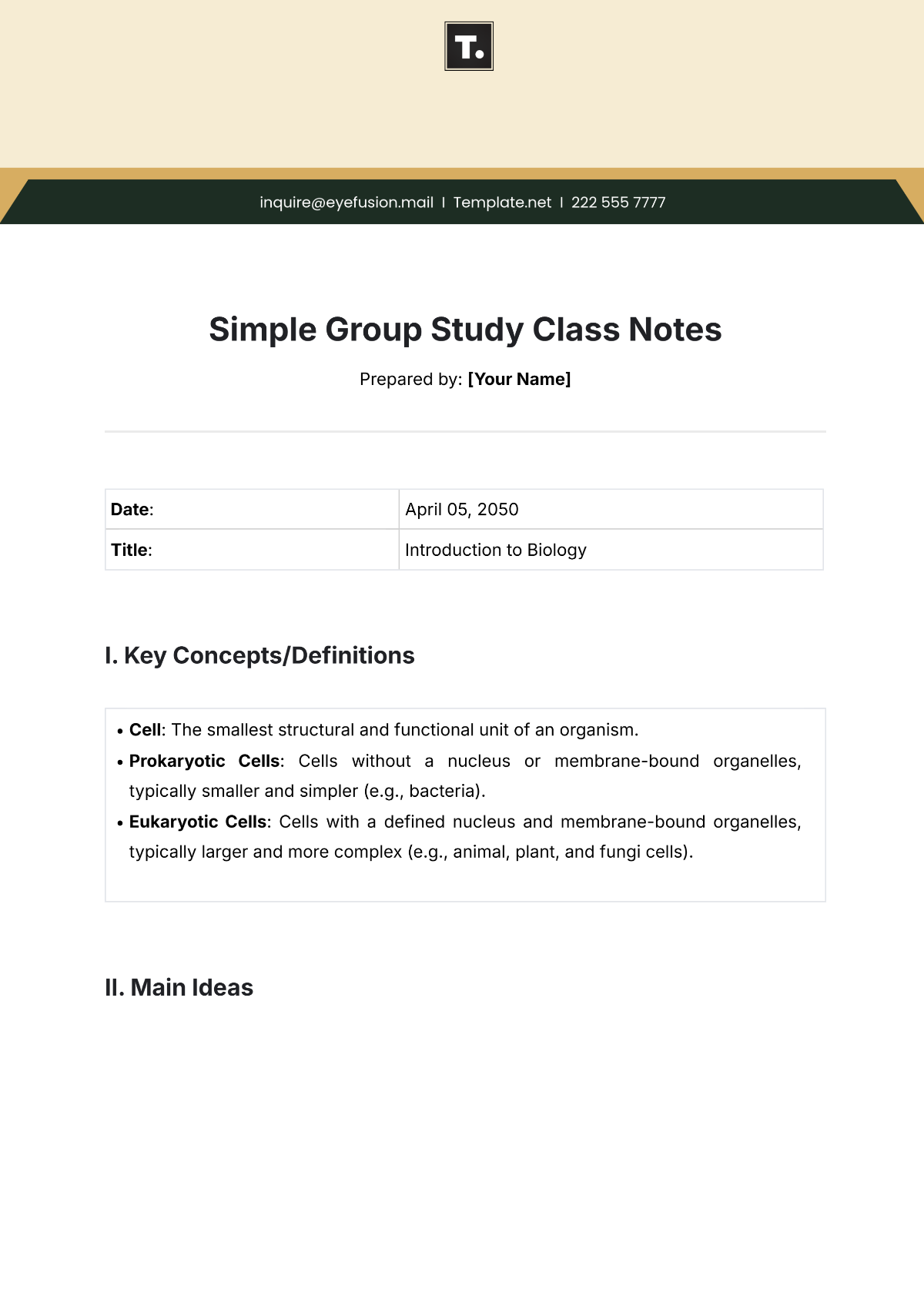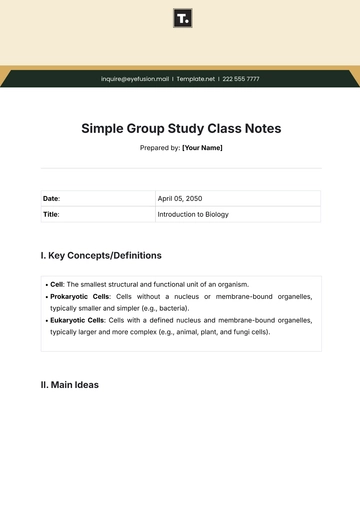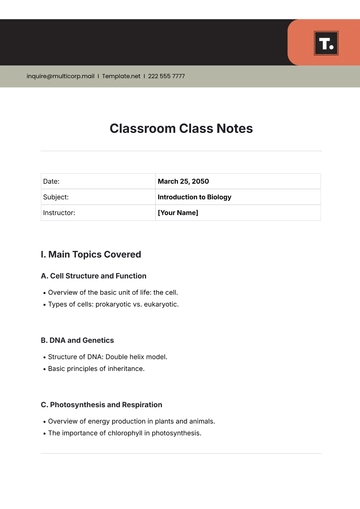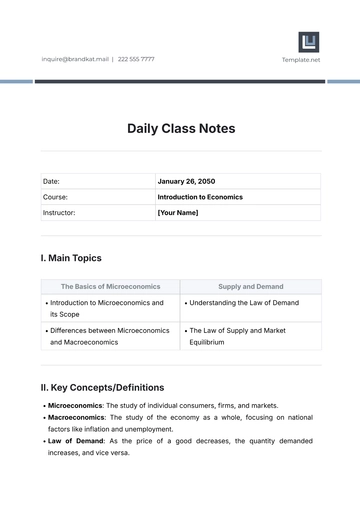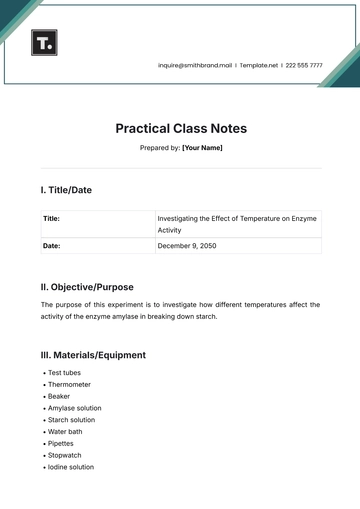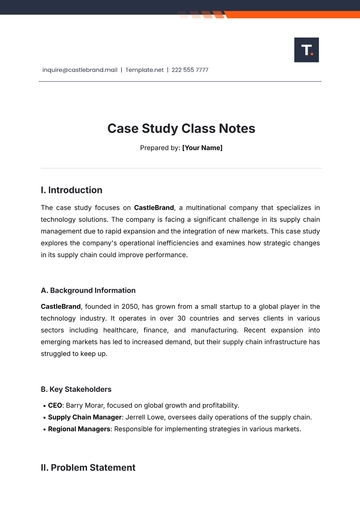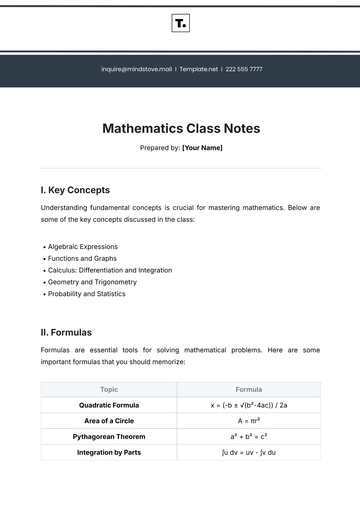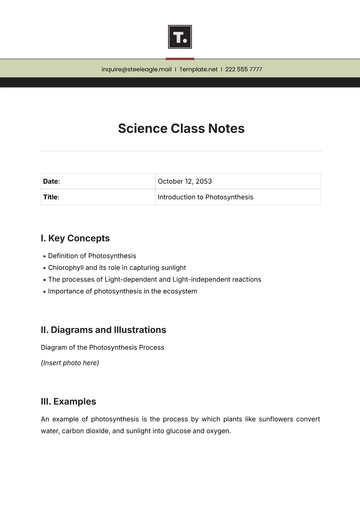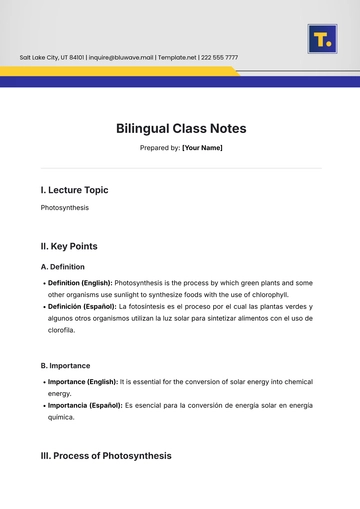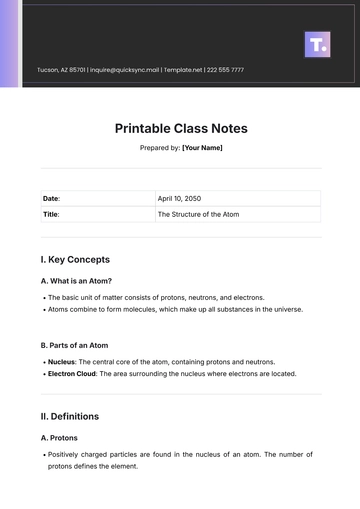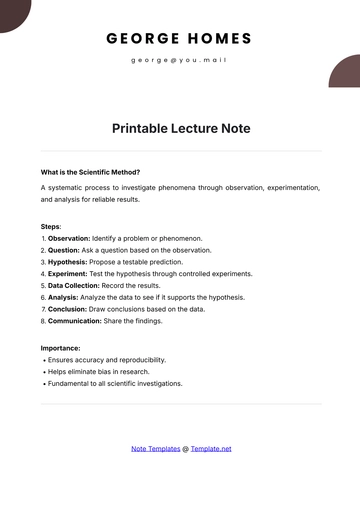Simple Group Study Class Notes
Prepared by: [Your Name]
Date: | April 05, 2050 |
Title: | Introduction to Biology |
I. Key Concepts/Definitions
Cell: The smallest structural and functional unit of an organism. Prokaryotic Cells: Cells without a nucleus or membrane-bound organelles, typically smaller and simpler (e.g., bacteria). Eukaryotic Cells: Cells with a defined nucleus and membrane-bound organelles, typically larger and more complex (e.g., animal, plant, and fungi cells).
|
II. Main Ideas
Cell Theory | Structure of Prokaryotic Cells | Structure of Eukaryotic Cells |
| Plasma Membrane: A barrier that separates the cell's interior from the outside environment. Nucleoid: Area where the cell's DNA is located, not surrounded by a membrane. Ribosomes: Structures involved in protein synthesis.
| Nucleus: Contains the cell's genetic material (DNA). Mitochondria: Powerhouse of the cell, responsible for energy production. Endoplasmic Reticulum (ER): Involved in protein and lipid synthesis.
|
III. Summary
In summary, all living organisms are composed of cells, with two primary types: prokaryotic and eukaryotic. Prokaryotic cells are simpler and lack membrane-bound organelles, whereas eukaryotic cells are more complex and contain specialized structures to perform various functions. The understanding of cell structures and their functions is critical for studying biological processes. |
IV. Diagrams/Charts
Diagram of a Prokaryotic Cell: Includes parts such as plasma membrane, ribosomes, and nucleoid region. Diagram of a Eukaryotic Cell: Shows nucleus, mitochondria, ER, and other organelles.
|
V. Discussion Points
What is the importance of the nucleus in eukaryotic cells? How do prokaryotic cells reproduce, and what does this mean for their evolutionary advantages? What are the similarities and differences between plant and animal eukaryotic cells?
|
Note Templates @ Template.net
